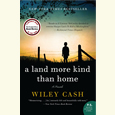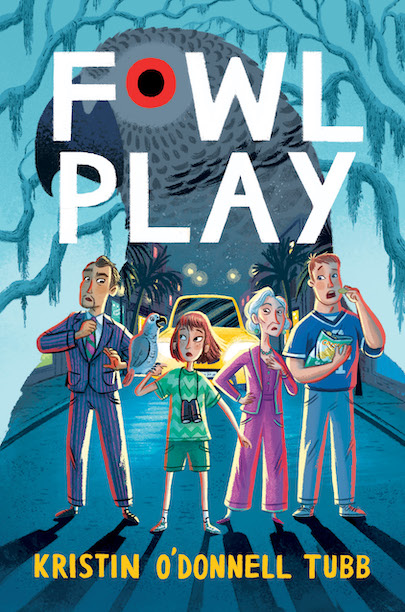A Revolution on the Airwaves
Night Train to Nashville tells the story of two men behind WLAC’s groundbreaking R&B broadcasts
With Night Train to Nashville: The Greatest Untold Story of Music City, Paula Blackman chronicles the history of WLAC, the Nashville radio station remembered for its radical R&B broadcasts during the 1950s, ‘60s, and ‘70s. Blackman’s grandfather, Edward “Gab” Blackman, was an executive at WLAC. In Jim Crow-era Tennessee, Gab had a controversial yet lucrative business idea: play music by Black artists and advertise to a Black audience on the radio. No other stations were doing these things at the time. Despite fierce racist opposition, WLAC’s R&B shows became a hit, with Black and white listeners loyally tuning in across the country.
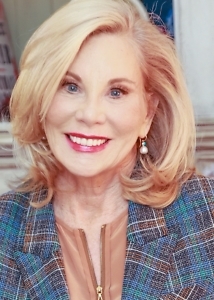 Inspired by her grandfather’s stories, Blackman put 15 years of research into a compelling work of creative nonfiction. Night Train to Nashville fuses family history with music history, moreover telling the story of a city undergoing a racial reckoning. The author made space for the perspectives and experiences of Black Nashvillians by featuring revered businessman William “Sou” Bridgeforth as a prominent character. As the owner of a storied North Nashville nightclub, the New Era, Bridgeforth was responsible for giving legends like Etta James, Jimi Hendrix, and Little Richard a stage to light up in Nashville. Most exquisitely, Blackman’s book portrays how WLAC and Nashville’s R&B scene brought Black musical expression to the forefront of pop culture in the segregated South.
Inspired by her grandfather’s stories, Blackman put 15 years of research into a compelling work of creative nonfiction. Night Train to Nashville fuses family history with music history, moreover telling the story of a city undergoing a racial reckoning. The author made space for the perspectives and experiences of Black Nashvillians by featuring revered businessman William “Sou” Bridgeforth as a prominent character. As the owner of a storied North Nashville nightclub, the New Era, Bridgeforth was responsible for giving legends like Etta James, Jimi Hendrix, and Little Richard a stage to light up in Nashville. Most exquisitely, Blackman’s book portrays how WLAC and Nashville’s R&B scene brought Black musical expression to the forefront of pop culture in the segregated South.
Ahead of her appearance at the 2023 Southern Festival of Books, Blackman answered questions from Chapter 16 via email.
Chapter 16: You describe your grandfather as telling his stories about WLAC in a “rich Southern style.” How would you describe that style, and what were the challenges and joys of transferring his stories to the page?
Paula Blackman: Robert Penn Warren’s description of Southern storytelling (quoted in the book) is the perfect description: “Elaborate, winding, wandering creations that might never wear out, stories full of human perception and subtlety, told with a richness of laugher and expression. Not idle gossip, mind you, but rather tales of wit and character.”
Southerners generally set the scene before getting to the heart of their stories. Rather than simply tell what happened, we add color by repeating or paraphrasing dialog and adding flavorful details, which can veer off into all sorts of directions.
For example: If we’re sharing the news that someone’s going through a divorce, we might wander into an elaborate description of the designer (or dollar store) clothing that was tossed into the yard. We might repeat or summarize what was heard, adding the spicy words and graphic details of the items and condition of the clothes that were tossed, as well as who tossed them. If we saw one of the involved parties in the grocery store, we might give an itemized description of what was in their shopping cart. Say, not just ice cream, but how many cartons and which flavor, as vanilla says one thing and decadent chocolate quite another.
Thus, we infer the individual’s emotional state without naming it. To avoid being labeled a “gossip,” the story will make a point. It will have a moral and often end with a plea to pray for this person.
The challenge of retelling my grandfather’s stories in this Southern style is they are normally told in conversational dialogue. That’s not how nonfiction is written. Nonfiction relies on published historical accounts for the underlying source material. And those details are not generally documented for posterity. That’s why Night Train to Nashville is a considered creative nonfiction. To tell it in the true Southern style required I add those details. I’ll never forget my original editor, Amanda Bauch, saying, “the biggest fiction would be for us to call the book fiction!”
Chapter 16: WLAC’s signal reached almost half of the country. What was the significance of the station’s famed R&B broadcasts coming from Nashville and the Jim Crow South?
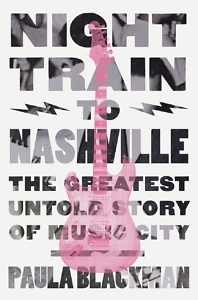 Blackman: The Jim Crow South is where the musicians were. R&B is an offshoot of the blues, and the blues were birthed in the Mississippi Delta. Most of the iconic musicians who were launched on WLAC came directly to the station from the Chitlin’ Circuit (the Black clubs and juke joints that provided the traveling performers their livelihood). Like the bandit who, when asked why he robbed a bank, replied “because that’s where the money is,” the Jim Crow South is where the Black musicians and their audiences were. And no station with any significant reach in this country targeted them.
Blackman: The Jim Crow South is where the musicians were. R&B is an offshoot of the blues, and the blues were birthed in the Mississippi Delta. Most of the iconic musicians who were launched on WLAC came directly to the station from the Chitlin’ Circuit (the Black clubs and juke joints that provided the traveling performers their livelihood). Like the bandit who, when asked why he robbed a bank, replied “because that’s where the money is,” the Jim Crow South is where the Black musicians and their audiences were. And no station with any significant reach in this country targeted them.
Nashville was home to both WSM and WLAC. The unique geography and position of their towers created a signal that was said to have a reach more akin to 100,000 watts. Depending on the atmospherics, they could regularly reach 28 states, and sometimes as many as 40 states. They even broadcast into Canada and throughout the Caribbean. WLAC’s management knew their nighttime signal reached 80% of Black homes in the country. So when the threat of television became a reality, they sought to mimic the success their local competitor WSM had achieved targeting a rural audience with their Grand Ole Opry “hillbilly music” program.
WLAC’s foray into R&B was deliberate. They sought to capture a Black audience by playing “race music” during a time the music was considered “too low-class and dirty for the airwaves.” As soon as they received word the FCC was set to announce Nashville would receive a television license, WLAC launched their race music broadcast as a hedge against that impending threat. It was commonly assumed then that television would kill radio. Their broadcast was a calculated and defensive business strategy.
People outside of Nashville may have considered the city “Music City” but if asked then, Nashvillians would have more likely described their hometown as a “Business City” or an “Education City.”
Chapter 16: An important collaborator in writing the book was Harriet Bridgeforth Jordan, the daughter of William “Sou” Bridgeforth. How did the two of you navigate reconstructing your family members’ respective conversations and narratives in a way that felt authentic to them and the people in their orbits?
Blackman: Before I contacted Harriett, I’d read every published account of Sou I could find. I read every day’s paper from 1939-1972: The Nashville Banner, The Tennessean, and the Black newspaper, The Globe. I also read the Pittsburgh Courier and Chicago Defender. Whenever I found mention of Sou, his club, his ball team, the musicians, or his number running, I saved the article. My newspapers.com account shows I clipped over 1,000 articles! I did the same with books and magazines, particularly Jet and Ebony. The extensive research I’d done on Sou occurred prior to my meeting Harriett.
By the time we met, I knew things about Sou that Harriett didn’t. Over the years I’d come to love and respect him. I initially researched all the Black club owners, but I quickly realized Sou was special. He was an extraordinary person who had come from an exceptional family. I decided early on to write the Black perspective from his point-of-view.
When Harriett and I met in person, we’d already had numerous conversations. I’d written a draft of Sou’s introductory chapter, “A Boy Named Sou,” based on my research. I went to Harriett’s home to read her the first draft of that chapter. Harriett, her husband Melvin, and believe it or not, my Uber driver listened to it. When I discovered my driver was an aspiring writer, I made him the designated listener. As I read the chapter, Harriett, Melvin and even the Uber driver teared up. Harriett dabbed her eyes and exclaimed, “That’s exactly what Daddy would have said.”
The pattern we developed was, after I’d done my chapter outline, we discussed it. She’d clarify the details, correct errors, sometimes in published accounts that were misreported. She provided a more nuanced, personal perspective, including rewording the dialogue. This became a most enjoyable and rewarding experience — for both of us. Today we’re as close as sisters.
Chapter 16: What made the legendary nightclub scene in North Nashville such an exciting place to play for Black musicians in the 1950s and ‘60s?
Blackman: The city of Nashville from the mid-‘40s through the early ‘60s wasn’t accommodating to Blacks. Rigid protocols governed where they could live, eat, what type of transportation they could use, right down to what water they could drink. It might be hard for some to comprehend, but most homes in Nashville’s Black neighborhoods prior to the mid-‘60s lacked indoor plumbing. They’d get water from fire hydrants and had outhouses behind their residences. This was in part due to limited affordable housing, as well as to the limited occupations available to Blacks — irrespective of their skills and qualifications.
Most Black men were manual laborers and most women worked as domestics. The toil and exertion they endured during the week made the weekends a celebratory event. It was customary to get dressed in their finest attire and go to the clubs on Friday or Saturday nights. Then again for church on Sunday. This gave hardworking people something to look forward to each week. Just knowing they could see someone like Little Richard, B.B. King, or Ray Charles at a club on Saturday provided the inspiration they needed to make it through a backbreaking week. There was tremendous joy in the clubs on Fridays and Saturdays and jubilation in the churches on Sunday.
Chapter 16: At a time when it was almost impossible to find Black artists on the radio, Gab was inspired to fill a gap in the marketplace with an R&B hour on WLAC. What are your thoughts about him building career success from the work of marginalized Black musicians and a mainly Black audience? Did he ever see it in those terms?
Blackman: One of my friends, a professor at Tennessee State, wrote her dissertation on that subject. Looking at this in retrospect, one would assume the musicians would have been resentful. Her research confirmed my grandfather’s claim that the R&B musicians loved WLAC, the deejays, and even the sales staff. Gab took tremendous pride in providing the musicians with an economic opportunity where none had previously existed. The artists made money selling records, which allowed them to never have to pick another bale of cotton, dig a ditch, or lay a brick. WLAC’s broadcast and the multitude of broadcasts that copied their playlists allowed the musicians to earn a living doing what they loved. For that reason, the musicians themselves were the station’s most loyal fans.
The audience, however, was different. They loved the station for the programming but were often taken advantage of by the station’s shameless promotion of huckster products. I don’t believe Gab had many sleepless nights over the shoddy products they sold C.O.D. He’d grown up in the day of traveling snake-oil salesmen, where the adage “buyer beware” was omnipresent. I think he bought into the idea that “a sucker was born every minute.” He considered truth in advertising an oxymoron. If you were “moron” enough to fall for a crazy spiel and order “100 redtop baby chicks” to be delivered through the mail, you learned very quickly to be a more discerning buyer. I don’t believe they had a single repeat customer for baby chicks. Yet they sold millions of them every year.
Chapter 16: Why do you think it’s important for younger generations in Nashville and the South to hear WLAC’s story, especially in such fraught times for Tennessee politics?
Blackman: I’m so glad to have been asked this question. Learning from our individual past mistakes — say ordering baby chicks through the mail — is not altogether different from learning from our collective past mistakes.
Let me provide an example: My brother-in-law was educated in Germany. Although he graduated from high school in Munich in the late ‘70s, he was unaware of the Holocaust until he came to this country to attend Duke University. He said that when he was in school, all the German history books ended in 1939. And for the same reason some people here want to ban books about Black history. It’s not a flattering portrayal of who we were/are.
Just because our history makes us uncomfortable, we shouldn’t ban books and prohibit teachers from teaching about our racist past. Pretending it never happened doesn’t make us better; it makes us ignorant. Imagine how my brother-in-law must have felt when he learned of his country’s horrific acts during WWII from other students at Duke. And imagine what they must have thought of him!
When we learn from the past, we avoid repeating the mistakes of the past. We avoid becoming a “moron” who will fall for a huckster’s spiel, be that for a product over the airwaves, a bill in the state legislature, or the ballot box for the next occupant in the White House.
Education is the answer to almost every problem, so why would we want to ban this knowledge? Why should we not face who we were (or are) so we can be better people living in a more equitable country?
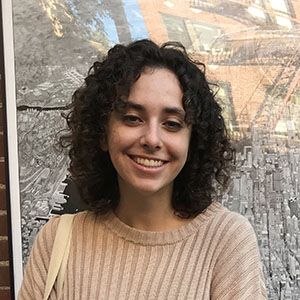
Jacqueline Zeisloft is a writer and editor whose work has appeared in Nashville Scene and Women’s Review of Books. She holds a B.A. in English literature from Belmont University. She lives in Brooklyn, New York.

